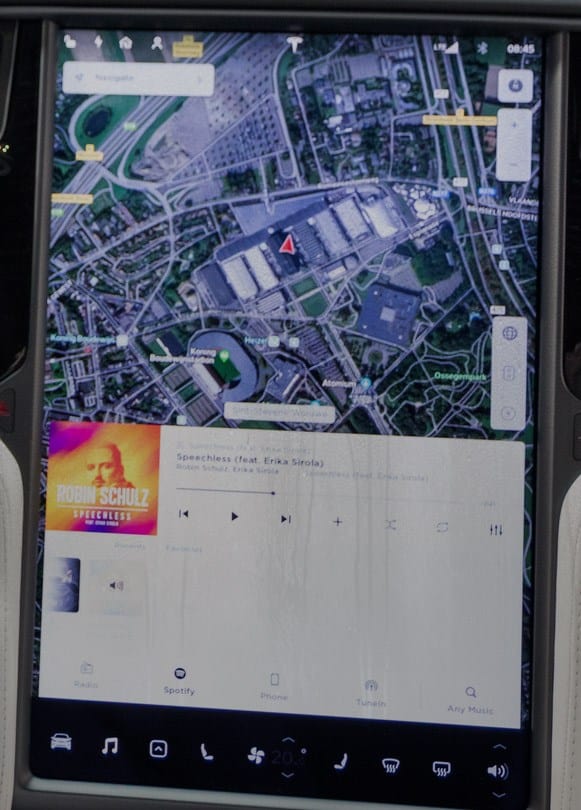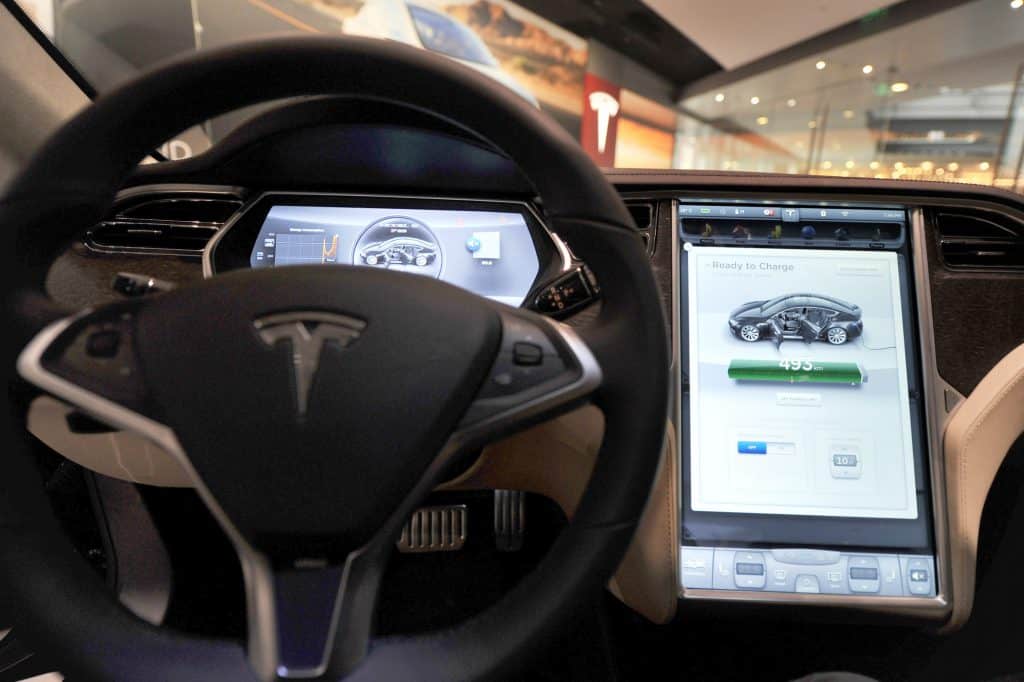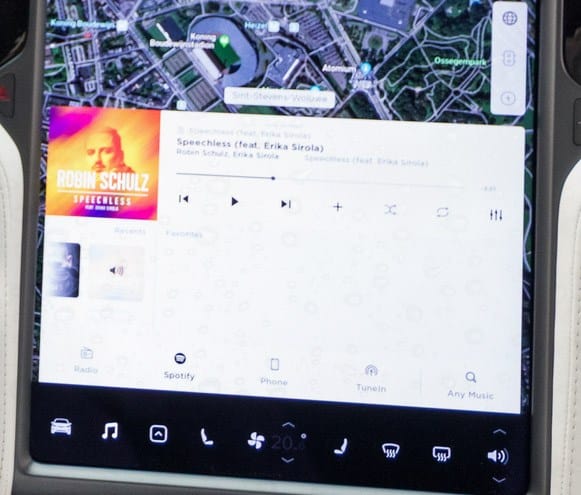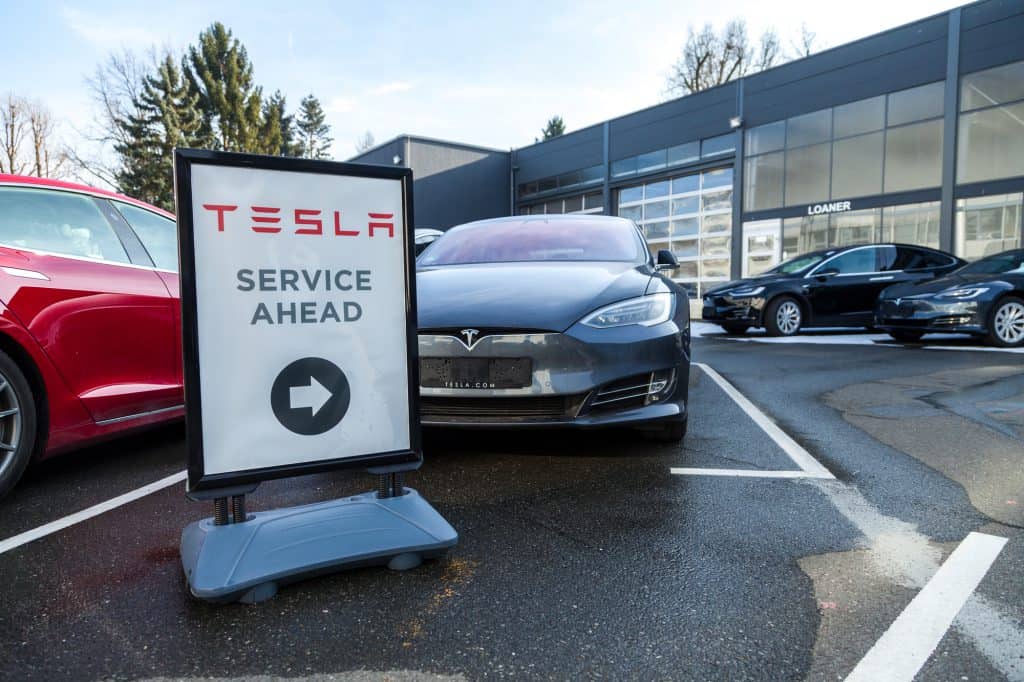Tesla has always made a lot of the quality and dynamism of their media control unit, or MCU, otherwise known as the large and dominating touchscreen that so fills Tesla cars’ interiors. The “small” units are 15 inches in size, and the larger ones 17 inches. Tesla moved all the main functions of their vehicles into these screens, thus heralding a new revolution of digital automotive wizardry.
This was not done to everyone’s praise and appreciation, however. Even admirers of Tesla vehicles actually came to resent the fact that certain controls had no manual failsafes and that everything was dependent on the proper function of the MCU.
These negative feelings were later amplified by the emergence of serious problems in the screens, some of which eventually even prompted serious recalls.
One of the most frightening and best-known issues emerged in 2012-2018 Model S and Model X cars, which use the larger 17-inch screens, where toxic fluid was emerging into the screens, creating bubbles, and then even leaking out of the screen:

There was even a petition started on Change.org where disgruntled owners came together to reject Tesla being able to charge anyone whose car fell outside of the warranty period. Before the formal recall (for an eMMC issue, not for leaking screens), drivers were being quoted anywhere from $1400-2000 for screen replacement.
In today’s blog, we’re exploring these serious defects, the causes behind them, and what Tesla eventually had to do about it to not only satisfy their customers but also silence the increasing volume of regulator voices that were coming out against the brand.
Background: The Origins of Tesla’s Monster MCU

One thing many people have asked upon seeing the Tesla screens for the first time is how it is and why it is that only Tesla has such large and impressive screens in its cars where other OEMs are still messing around with standard 7-inch displays and “upgrading” to “large” 10.2-inch displays, which is about the industry average.
Some explain away the difference by simply pointing out that most EVs and other cars with touchscreens are favoring the addition of digital instrument displays, such as the Audi Virtual Cockpit, which supplants the need for a large central touchscreen.
That may be the case for some OEMs, but let’s not forget that in Tesla’s range, the MCU only gets larger when you also have the digital instrument panel there, IE on the Model X and S, which have the 17-inch MCU and a digital dash display.
So what’s really behind Tesla’s unique screens? The truth is that Elon Musk and Tesla didn’t even turn to an automotive manufacturer to get their screens, they instead turned to laptop producers and computer divisions of larger corporations. Musk’s general idea was that laptop screens were pretty sturdy nowadays, so what did they have to fear from getting a larger computer screen to make Tesla cars really unique?
This story is mentioned in the biography of Elon Musk written by Ashlee Vance. Musk’s team points out to him that “there’s nothing like that in the automotive supply chain,” to which Musk replies, “I know. That’s because it’s never been put in a f**king car before.” He also explains to his team why he believes a more regular computer screen would be sufficient: “The laptops are pretty robust. You can drop them and leave them out in the sun, and they still have to work.”
This was Musk’s summation, but was he right? The fact is that none of the screens he looked at did meet the particular automotive standards that would normally be favored by OEMs, in particular when it came to withstanding the pretty unique heat fluctuations that many vehicles experienced when in use.
Tesla finally ended up with a screen from Taiwanese manufacturer InnoLux, the G181J1-LE1, as its choice for the 17-inch display. This decision would eventually prove quite a fateful one.
What’s Wrong with the InnoLux Screen?
The screen itself is an excellent product, and is tested for industrial applications, which makes the rigor of testing considerably higher than you’d expect of any laptop computer. This is partly what informed Tesla’s choice, since they — or at least, Musk — thought that a laptop-style screen would be sufficient, and would allow for a much greater size.
All the testing done at InnoLux and then subsequently by Tesla seemed to show that this screen would indeed stand up to anything put before it, and Tesla could go ahead with their monster MCU that would set them apart.
After some time, however, things started to…unravel. Of the 5 grade levels, grades 4-0, with grade 4 the lowest high temperature operating and storage life tolerance and level 0 the highest. The InnoLux model chosen by Tesla was a grade 4 unit.
Bubble, Bubble, Toil and Trouble

The first problem to emerge was the above-mentioned bubbling issue. The cause? Almost certainly it was to do with heat. The huge heat fluctuations that the cars experienced, especially in hot climates like southern California, saw bubbles forming at the edges of the displays, and sooner or later starting to leak out a toxic, adhesive fluid into the expensive Model S or Model X interior.
Tesla first claimed to fix this problem with their “Cabin Overheat Protection” feature, but even that was considered a non-fix in reality because not only did the problem continue, but others started to emerge, too such as the now infamous yellow banding around the edge of the screen, caused by an adhesive used in production that also couldn’t stand up to the temperature extremes.
The next solution to the bubbling and other problems was to offer new screens, but this presented new difficulties. They’d only be replaced under warranty if the warranty was still valid.
This was a step short of a recall, even though Tesla was encouraging and promoting new screens being available to fix the problem. Those with active or extended warranties could get their screens replaced, while others faced huge bills.
Recall Order

Finally, problems with the screens came to a head when regulators started to apply pressure for Tesla to perform recalls that would address screen issues and ensure everyone got a better and more reliable screen unit. The recall in total covered 135,000 Tesla EVs, including the 2012-2018 Model S, and the 2016-2018 Model X.
Unfortunately this widespread recall was for an eMMC failure (issues with the embedded memory within the screen device, resulting in blank screens). While Tesla continue to fix leaking screens under the warranty, there hasn’t been any recalls for leaking screens – only the eMMC failure.
The reason the National Highway Traffic Safety Administration (NHTSA) put so much pressure on Tesla wasn’t focused on poor screen quality, but more because of the lack of alternatives for controlling key features. The fact is that on these Tesla cars, if and when the MCU becomes defective, then the entire functionality of the vehicle is impacted.
On other vehicles, if the infotainment touchscreen isn’t working, then you might lose built-in navigation and your ability to connect your smartphone to the system, but you can still operate climate controls, as well as tools like the defogger and rear-view camera. In a Tesla, you can’t because they’re all housed within the MCU.
Users of MCU2 have noted that when resetting glitchy screens, there is now minimal loss of function. In fact, besides the HVAC shutting off while a reset happens, the remaining functions, including AutoPilot all remain active.
However, no active screen does mean that there is no audio chime or other confirmation that key features like turn signals are working — though users have confirmed that lights and signals do in fact all work.
At least a recall order allowed the owners of those 135,000 Tesla vehicles to get new screens that would stand up better to the temperature fluctuations that are a reality in the automotive world.
Help for Tesla Users
If you have one of the recalled models mentioned above and haven’t acted on your recall, you should contact your Tesla Customer Service Center ASAP to look into that. In the meantime, even with an apparently fixed or replaced screen, try to avoid leaving your Tesla vehicle in locations where it will get hardcore sun baking down on it for many hours at a time.
Try to park in shaded or covered spots, and keep your Tesla in a garage or carport overnight if you can.
If screens are glitching, you can try simple fixes like pressing down on both scroll buttons to reset the screens (hold for about 10 seconds). You can also try a soft reboot of the entire car while parked by holding on the brake and then pressing the scroll buttons. This power cycling process is often enough to fix glitching screens.
If glitches persist, however, or you detect even a small amount of yellowing or liquid bubbles emerging, then take the car to the Service Center at the first opportunity.

Hi Tristan,
Thanks for this explanation.
Though the title seems to me a little bit confusing. As I understood the recall was only for that EMMC-failure. Leaking screens was not part of that recall, is it?
Or am I missing something?
And does that mean that even after EMMC replacement (by third party), Tesla should still cover my laeking screen at this moment (Tesla 85 11/2014)? Where do I find that info?
thanks for your reply
Hi wannes, you’re quite right – whilst the article did mention that the leaking screens themselves weren’t part of the eMMC recall, it wasn’t always 100% clear. I’ve now made some tweaks to make it clear that the leaking screens aren’t part of the recall, and are only fixed under the warranty.
So if your leaking screen is in a 2014 Tesla, you might unfortunately be out of luck. You could ask your local service center just in-case they are in a charitable mood, but I’m not sure whether they’ll help (unfortunately).